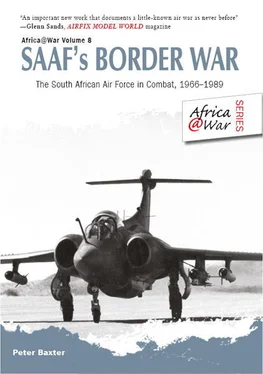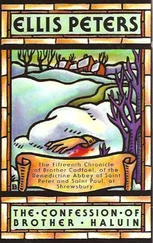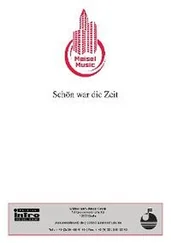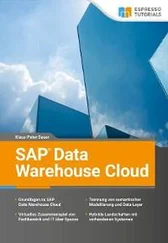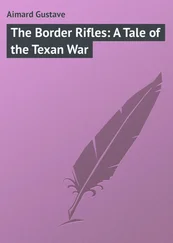Peter Baxter - SAAF's Border War
Здесь есть возможность читать онлайн «Peter Baxter - SAAF's Border War» весь текст электронной книги совершенно бесплатно (целиком полную версию без сокращений). В некоторых случаях можно слушать аудио, скачать через торрент в формате fb2 и присутствует краткое содержание. Город: Solihull, Год выпуска: 2013, ISBN: 2013, Издательство: Helion & Company, Жанр: military_history, на английском языке. Описание произведения, (предисловие) а так же отзывы посетителей доступны на портале библиотеки ЛибКат.
- Название:SAAF's Border War
- Автор:
- Издательство:Helion & Company
- Жанр:
- Год:2013
- Город:Solihull
- ISBN:978-1-908916-23-5
- Рейтинг книги:3 / 5. Голосов: 1
-
Избранное:Добавить в избранное
- Отзывы:
-
Ваша оценка:
- 60
- 1
- 2
- 3
- 4
- 5
SAAF's Border War: краткое содержание, описание и аннотация
Предлагаем к чтению аннотацию, описание, краткое содержание или предисловие (зависит от того, что написал сам автор книги «SAAF's Border War»). Если вы не нашли необходимую информацию о книге — напишите в комментариях, мы постараемся отыскать её.
SAAF's Border War — читать онлайн бесплатно полную книгу (весь текст) целиком
Ниже представлен текст книги, разбитый по страницам. Система сохранения места последней прочитанной страницы, позволяет с удобством читать онлайн бесплатно книгу «SAAF's Border War», без необходимости каждый раз заново искать на чём Вы остановились. Поставьте закладку, и сможете в любой момент перейти на страницу, на которой закончили чтение.
Интервал:
Закладка:
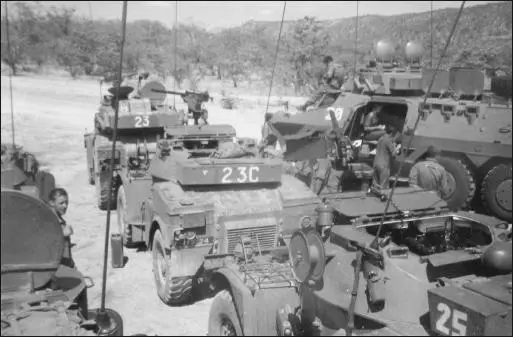
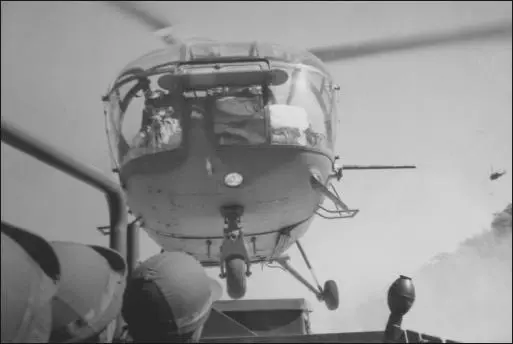
The warning came in the form of a written dispatch handed to South African diplomats – the precise venue for this is not known but it was probably in Washington or at the United Nations – by their Soviet counterparts, to be passed on to the government in Pretoria. While it was stressed in the dispatch that the contents of the message should not be regarded as a threat, it was nonetheless pointed out that the continued occupation of Angolan territory by South Africa and ongoing support for UNITA were unacceptable to Moscow. Moreover, it was stated that the desired withdrawal of Cuban troop from Angola as a precondition for the extraction of South African troops from South West Africa would not take place. The USSR, it was pointed out, was tied to Angola by an agreement of friendship and cooperation and could be expected to provide what support was required by Angola for the protection of its sovereignty and territorial integrity.
Needless to say, Pretoria rebuffed this threat, which it clearly was, while the final planning and preparation for Operation Askari went ahead. The South Africans were nonetheless rattled by the exchange. The offensive aspects of the plan were as a consequence modified, with the main objective once again being to disrupt and destroy SWAPO’s logistics, deployment and supply capability, but this time the emphasis was placed on a strategy of isolating military strongpoints and applying threat and attrition in the hope that enemy forces would suffer a collapse of morale and desert without the necessity of a full confrontation. The operational plan was finally approved in four phases:
Phase 1: Deep penetration Special Force reconnaissance followed by SAAF air assault on the Typhoon/Volcano [22] Volcano was a SWAPO Special Force/commando unit trained to a higher degree than most PLAN combatants, with individuals referring to themselves as Typhoon comrades. This group infiltrated SWA in 1983 and were dealt with in Operation Phoenix of that same year.
base located near Lubango, taking place between 1 November and 30 December 1983;
Phase 2: Offensive reconnaissance operations and the isolation of Cahama, Mulondo and Cuvelai, extending from 16 November 1983 to mid-January 1984. The aim of this was to cut off enemy communication and logistic lines in what was known as the Deep Area, or all areas of Angola which were of operational interest to South Africa but not within the defined Shallow Area. This, it was hoped, would demoralize and terrorize SWAPO defenders to the extent that they would abandon their positions and withdraw northward;
Phase 3: Commencing at the beginning of February 1984, to establish a dominated area from west of the Cunene River, through Quiteve, Mupa, Vinticette and eastward through Ionde;
Phase 4: The final curtailment of hostile incursions into South West Africa, internally if required.
The three principal targets of Operation Askari were located in a wide arc within what was classified by FAPLA as its 5th Military Region. Cahama, one of the main proposed targets, lay 150 kilometres northwest of Xangongo on what at the time was a good road, while Mulondo, another key target, was located a little farther than this, perhaps 200 kilometres from Xangongo, but also on an accessible arterial route. Cuvelai lay farther north still but was considerably more remote on the eastern perimeter of the derelict Parque Nacional da Mupa .
A heavy Special Force reconnaissance insertion, one of the largest so far in the war, was done at a number of points behind enemy lines in order to gather the necessary tactical intelligence on enemy strengths and dispositions upon which detailed planning could be made. What was reported back in general terms was that FAPLA was at brigade strength at Cahama, Mulondo and Cuvelai – with a brigade in this context being somewhere between 600 and 1,000 men. In addition, each town was well defended by an extensive network of bunkers as well as a great deal of razor wire, minefields and artillery. Of particular concern to the flying crews were the well-integrated anti-aircraft defences that included a brace of SA-8s and SA-9 missile systems as well as 14.5mm and 23mm guns. However, the entire configuration, in keeping perhaps with the Soviet doctrine that inspired it, was clearly defensive in intent, suggesting that there was only a very limited potential for any direct offensive action on the ground.

What was also ascertained – although separate reports differ on this fact – and notwithstanding a handful of Cuban and Soviet advisers in situ, was that no meaningful foreign element to PLAN/FAPLA forces was in place. A Cuban regiment was based at Jamba, however, and a second at Matala, both in the Huíla Province north of the main focus of SADF attention.
Offensive action against Cahama began in mid-November with an initial deployment of Special Force reconnaissance teams to cut logistics and communication lines and to generally attempt the isolatation of Cahama while the SAAF carried out strikes against identified targets within the defensive perimeter. The strategy was to rattle and exhaust defending forces prior to the additional psychological stress of realizing, with the arrival of the main mechanized force, that a major South African attack was imminent.
This preliminary softening-up had a limited effect, as Brigadier-General Dick Lord commented in his history of the SAAF in the Border War, From Fledgling to Eagle , because a garrison such as that entrenched in Cahama, fortified by the sense that it had beaten the Boere back on previous encounters, was hardly likely to be overawed by the offensive efforts of a handful of Recces and the attentions of the SAAF against its well-constructed trench and bunker system. It was not until the forward advance of Task Force X-Ray, comprising mainly 61 Mechanized Battalion and attached artillery, and with a SAAF MAOT attached, appeared in mid-December that the real pressure began to be applied. ( See appendix for a first-hand account of a SAAF officer serving as MAOT for 61 Mechanized Battalion during Operation Askari .)
In this regard, it is worth noting that Cahama had been heavily and consistently bombed during earlier operations – particularly during Operation Protea – although it had never been targeted with a view to being taken or occupied, which had always tended to be interpreted by the enemy as a tactical loss, with much subsequent propaganda mileage being made out of this fact by the defenders who consistently claimed that they had driven off the Boere .
Another point worth mentioning in regard to the assault on Cahama is the fact that it was known prior to the launch of Askari that among the anti-aircraft armaments deployed around the target was the vehicle-mounted and radar-supported Soviet SA-8 missile system, a highly mobile, low-altitude, short-range, tactical surface-to-air missile system that until then had not been deployed outside of the USSR. The capture of one of these was the objective of a high-priority side operation codenamed Fox . This operation involved coordinated ground and air bombardments undertaken in such a way as to force the southward movement of the mobile batteries in order that an SA-8 could be isolated by ground forces and snatched. The operation failed, although an older SA-9 system was captured in Cuvelai which, even though not precisely what was hoped for, was nonetheless an important acquisition and of significant intelligence interest.
Читать дальшеИнтервал:
Закладка:
Похожие книги на «SAAF's Border War»
Представляем Вашему вниманию похожие книги на «SAAF's Border War» списком для выбора. Мы отобрали схожую по названию и смыслу литературу в надежде предоставить читателям больше вариантов отыскать новые, интересные, ещё непрочитанные произведения.
Обсуждение, отзывы о книге «SAAF's Border War» и просто собственные мнения читателей. Оставьте ваши комментарии, напишите, что Вы думаете о произведении, его смысле или главных героях. Укажите что конкретно понравилось, а что нет, и почему Вы так считаете.
